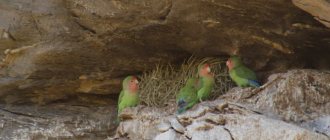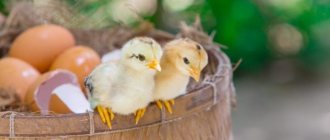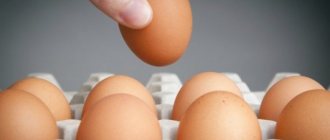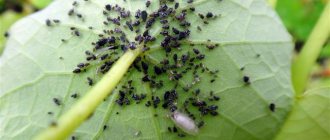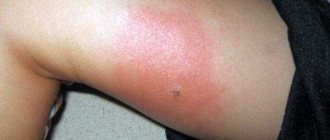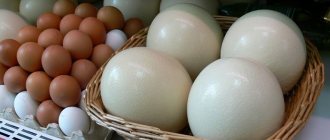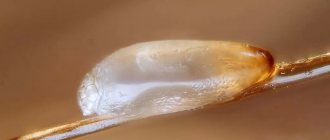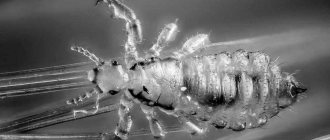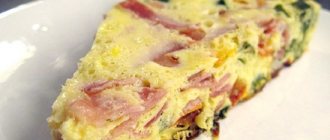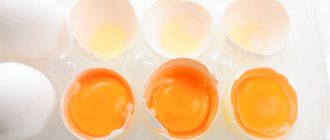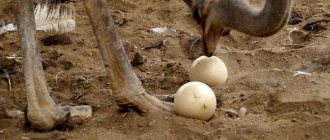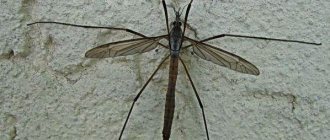17-21 days after the female budgerigar lays an egg, a chick should emerge from it. Most often this happens on the 18th day.
The period may be slightly shortened or lengthened depending on:
- Time of year and length of daylight hours (faster in spring and summer, longer in winter and autumn).
- The age and health of both parents (in old or weak birds the period may be longer).
- The number of eggs in the clutch (the fewer eggs, the more intense the heating of each of them, the faster the development of embryos).
- Incubation began. Wavy hatches chicks most often from the moment the second egg appears, but sometimes the female sits on the clutch with the appearance of the first or only after the appearance of the third.
On average, the female lays 6 eggs, but sometimes there are up to 12 eggs in a clutch. Each new one appears a day after the previous one (sometimes after 2-3 days). Accordingly, the chicks hatch with an age difference of 2 or more days.
To accurately calculate how many eggs budgerigars hatch, in each specific case it is necessary to add up the number of days from the moment the first egg appears to the day when the last one was laid, and add 21 days to this number. This will determine the maximum number of days after which the last chick will have to hatch.
Couple communication and readiness to reproduce
Puberty in male budgerigars occurs at about 10 months, in females - a little later, after about the first year of life. The owners of an adult pair of birds can count on the appearance of offspring, but only if both the male and the female like each other. It’s not difficult to notice: the parrot will show off, coo touchingly near his friend and preen her feathers, and his neighbor will graciously accept such signs of attention. If the parrots' sympathy for each other is obvious, but they clearly do not plan to replenish the pair, you can try to push them to reproduce. To do this, experienced breeders use the following tricks:
- installation of a nesting house.
It will arouse interest in a female who is ready to have offspring, and she will begin to equip it and build a nest from fluff, twigs and blades of grass that she finds in the cage. Such attention to the house can be one of the sure signals that masonry is just around the corner; - increase in daylight hours.
Prolonged daylight hours can enhance the sexual activity of budgies, so it is often recommended to increase the illumination using special lamps. However, you can only act gradually: a sharp transition to long daylight hours can cause premature molting in birds; - vitamin and mineral supplements and changes in diet.
Females and males ready for reproduction sharply increase their appetite, so daily portions for them are increased. The daily menu also includes sources of calcium and vitamin D, including healthy balanced solutions to increase egg production.
When all favorable conditions for a couple are created, the chances of mating for parrots are very high. You can tell that birds are ready to breed by the fluffy plumage and raised tail of the female and the increased activity of the male. The mating season for budgerigars lasts 1–2 weeks with mating 1–2 times a day. During this period, it is extremely important to provide the birds with complete rest, a comfortable microclimate and protection from any stress and shock.
Behavior during mating season
It happens that some owners do not understand that the birds are starting to mate. Before starting this procedure, the couple should be placed in a separate cage or box. You need to pour sawdust into the bottom and then add chamomile.
The plumage changes during mating - the color of the male's chin becomes bright blue, and that of females - brown. At the same time, the activity of the birds increases - the male constantly flies around the cage and calls his girlfriend to him.
You should take care of feeding in advance - the female will need calcium and phosphorus to produce healthy offspring.
Signs of readiness for laying in female budgerigars
The gestation of eggs in parrots can be compared to pregnancy in mammals. Already a few days after the end of the mating period, it is possible to determine whether fertilization was successful. You can understand that the female is ready to lay an egg by the following signs:
- desire for solitude.
The female budgerigar becomes less active and sociable: she constantly pushes her partner away, increasingly spends time in the nesting house and tirelessly puts things in order; - external changes.
The abdomen and circumcaudal zone in “pregnant” females noticeably increases. Experienced breeders can also carefully feel the location of the eggs in the parrot's abdomen before laying; - high frequency and volume of litter.
As a rule, this is one of the signs that laying will begin in the next few hours. At the same time, you can even notice that the tail of the female budgerigar fluctuates in time with her breathing.
Conditions of detention
Comfortable conditions for mating are one of the key points when breeding budgerigars at home.
- The first step is to disinfect the cage and accessories.
- Then the daylight hours are increased to 14-16 hours. This must be done gradually, otherwise you can provoke molting.
- The cage should be in a quiet and peaceful place, where there is no noise or extraneous sounds.
- The air temperature should be around 20-23 degrees, air humidity about 60%.
Laying, incubation and emergence of chicks
Masonry.
If you can determine that the bird is actually carrying eggs, it is extremely important to adjust its diet. Females remove foods that can cause diarrhea from the menu so that the clutch develops naturally and without unnecessary complications. However, if the expectant mother is in poor health or does not feel very well, the veterinarian may recommend special medications to maintain vitality and the proper formation of the chicks. Budgerigars lay eggs approximately 10–18 days after mating. The quantity in one clutch is from 3 to 7 pieces. However, some of them may be unfertilized. This can be determined by holding each one up to the light: an embryo with a pattern of blood vessels should be visible in the egg. If nothing is visible inside, such eggs are simply removed from the clutch.
Incubation.
From the moment of laying until the chicks are born, about 3 weeks pass. All this time, the female practically does not leave the nesting house, turning the eggs over for uniform warming and incubation. She can leave the nest only from hunger or thirst or out of need. All this takes a minimum of time so that the masonry does not have time to cool. At the same time, males also often take care of their girlfriend and their offspring: they bring food and treats to the house and can even hatch the eggs themselves if the female has gone somewhere. However, there are frequent cases when the female abandons the clutch. Most often this occurs in young parrots during their first “pregnancy”, as well as during severe fright or stress. In such situations, owners interested in the appearance of offspring place eggs in an incubator; inexperienced owners can wait for the new mating season.
Birth.
Budgerigar chicks are born strictly in the order in which the female laid them, so there can be both chicks and eggs in the house at the same time. Then the mother and father take care of them for 1–2 months: the female feeds them with crop milk and warms them under the wings, and the male looks after them during those short periods when she is absent. By the end of the 2nd month, the babies leave the nest and independently get into the cage. Immediately after this, it is necessary to remove the house so that it does not cause the couple to need to reproduce again: for the full development of the next offspring, the mother needs to rest for at least several months.
When do the first eggs appear?
How long do budgies carry eggs? It takes 9-10 days from mating to the appearance of the first clutch. But how do you know for sure that eggs will appear soon? When a female budgie begins to lay eggs, her tail may shake rhythmically with her breathing. The volume of feces also increases in size. Just before laying, the female begins to pluck feathers near the cloaca. Eggs begin to appear every day or every other day. As a rule, a young female may have more eggs than a bird that is laying more than its first clutch.
As soon as the first eggs appear, the female immediately begins to warm them - the incubation period begins.
Possible problems during reproduction
The reproductive system of budgerigars is quite fragile and sensitive; even minor disruptions in the body can affect it. If any such problems arise, the owner needs to pay maximum attention to the pet, and consultation with a veterinarian and properly selected treatment become vital. Below is a list of the most common difficulties with laying eggs in females.
Masonry alone
If a female budgerigar nests and lays eggs alone, then we can talk about a certain pathology in the bird’s body. However, rare clutches will have little effect on the pet’s health, but if this happens frequently, there is a risk that she will suffer from a serious lack of calcium in the body. Of course, nothing will hatch from unfertilized eggs.
Irregular egg shape or size
If there are problems with nutrition and a lack of nutrients - primarily calcium - the egg is formed with a defect in shape. Because of this, it cannot properly exit the female’s oviduct and compresses the nerves and surrounding organs, which in some cases leads to the death of the bird. You can notice such a complication by heavy breathing and noticeable tension in the parrot’s abdomen, as well as limping when, due to long attempts to lay an egg, the paws go numb.
All eggs in the clutch are empty
When a couple nests safely and the female makes clutch after clutch, but all the eggs in it are without embryos, this can be either a genetic feature or a consequence of infectious diseases. In this case, the parrots are separated so that the female does not waste her health and strength and does not suffer from exhaustion.
Too frequent clutches
Parrots can be ready for a new mating period almost immediately after the previous offspring has left the nest. This should not be allowed, since the female does not have time to recover and rest, becomes very weak and experiences stress, which can lead to rupture of the oviduct and the egg getting stuck in the abdominal cavity. The gap can be determined by the parrot's sudden weight loss with an abnormal increase in the abdomen and by the pose with its legs widely spread. In this case, the bird requires immediate help.
House installation
2 weeks after the preparation stage, a house must be installed in the cage. The optimal size of the house is 20 x 20 x 15 cm.
Don't worry if the female doesn't react and doesn't go there. In a couple of days she will get used to it, begin to become interested and build a nest there.
For this she will need building material. Sawdust, dry grass and thin twigs are placed in the cage. As a preventive measure against parasites, you can add dry medicinal chamomile.
The female will independently carry the material into the house and arrange the nest; she should not be helped.
Moment of birth
Before the egg appears, the bird becomes calm and focused. The abdomen sinks and swells, breathing becomes difficult. The pet sits in the nest and does not want to communicate. Sometimes childbirth is accompanied by cramps and bleeding.
To alleviate the condition, the female is fed baby food diluted with drinking water. Heating is increased slightly by bringing the light source under the bottom of the cage no more than half a meter, maintaining a temperature of 37°.
To avoid diarrhea, the pet is limited in its consumption of soft green food. Labor ends when the egg slips out of the bird's body. Subsequent ones come out every other day. As soon as 2-3 eggs appear, the female sits down to incubate the offspring.
How to arrange an aviary?
An aviary is a very large cage that can occupy part of a room. When making aviaries for breeding budgies, you can use a variety of materials, in particular:
- Multilayer plywood;
- Plastic;
- Various types of meshes;
- Steel or duralumin corner.
It is not recommended to paint or cover the inside of the enclosure with paints that contain toxic substances. After all, parrots are very inquisitive, they “taste” everything around them and, having pecked on toxic substances, can die.
When planning to breed budgerigars in an aviary, it is also very important to choose the right strong metal mesh with the appropriate mesh size for its construction. Let us immediately note that a mesh made of copper and brass wire is not suitable, since the surface of such wire is covered with oxides, which can cause severe poisoning of birds.
The most suitable option may be a fur farming mesh with cells 16 x 48 mm:
Let us immediately note that a mesh made of copper and brass wire is not suitable, since the surface of such wire is covered with oxides, which can cause severe poisoning of birds. The most suitable option may be a fur farming mesh with cells 16 x 48 mm:
- It can be easily and securely attached to any (wooden or metal) frame;
- If any individual cell is damaged, it does not lose strength.
As for painting the mesh, there are also certain requirements:
- You need to paint evenly, in a very thin layer, avoiding smudges (this will prevent birds from pecking at the paint);
- Paint only black (this will make it easier to watch the birds);
- For metal surfaces, use nitro paint;
- After painting, the mesh should dry well (then the paint will adhere tightly and will not crumble under the beak).
There is one more important detail - if the frame of the enclosure is planned to be made from wooden beams, then the mesh must be fastened from the inside, and the corners of the beams accessible to the beaks of the parrots must be protected with steel corners.
For ease of cleaning, enclosures should be provided with trays, which are best made from materials that cannot corrode under prolonged exposure to moisture. It could be:
- Roofing galvanized iron;
- Sheet duralumin.
Also, when setting up an enclosure, you need to remember that food waste, which will constantly remain after feeding, can attract small rodents (mice, rats). Therefore, everything must be done to prevent them from getting inside the enclosure. After all, they can:
- Cause dangerous infections;
- Contaminate and destroy food, rendering it unsuitable for birds to eat;
- Cause panic in the flock, as a result of which the birds may be injured and even die;
- Attack birds sitting on the floor, destroy young animals.
The best way to protect against such “guests” is to cover the floor and walls with sheet iron, especially paying attention to the baseboards and corners
Important! In order for parrots of different generations to coexist in the aviary, it can be divided into two parts. One of them will house couples who are expecting offspring, the other will house young animals.
And it is most convenient to keep birds prepared for sale in cages arranged in tiers. But this is not all the secrets of breeding budgies.
One of them will house couples who are expecting offspring, the other will house young animals. And it is most convenient to keep birds prepared for sale in cages arranged in tiers. But this is not all the secrets of breeding budgies.
Important! In order for parrots of different generations to coexist in the aviary, it can be divided into two parts. One of them will house couples who are expecting offspring, the other will house young animals.
And it is most convenient to keep birds prepared for sale in cages arranged in tiers. But this is not all the secrets of breeding budgies.
Formation of a marriage union
Before you start breeding parrots, you need to remember that these are flocking birds. The breeder brings together several parrots of different sexes in one room, giving them the right to choose the object of affection. A budgie entering childbearing season must go through all stages of courtship, starting from meeting its partner.
Pairing rules:
- Healthy, strong offspring are possible only from parents without blood ties. Inbreeding leads to the appearance of weakened chicks with congenital anomalies. Sick birds with bad heredity do not live long.
- You cannot force a partner on your parrot. Forced marriage can be fruitless. It is better if the newlyweds choose each other themselves, then the offspring of the loving couple will appear soon.
- The suitable age for mating is one and a half years for females and one year for males. Indicators of high fertility from two to four years. They do not lose their ability to reproduce until they are eight to nine years old. Older birds are not suitable for breeding.
- Females usually choose their own “spouse” and subsequently dominate. Experts advise placing a young female with an experienced male who has already established himself as a father. Then, as she grows up, the girl will not show a quarrelsome character, but will learn to obey her partner.
How many eggs does a goose hatch: correct selection
How long does an Indian duck sit on eggs?
A goose can hatch as many eggs as its size allows: from 10 to 15 eggs. The collection of eggs for future incubation lasts on average 10 days, but no more than 20. They select medium-sized ones (160 g), since small ones will produce small chicks that will be stunted and will not gain sufficient live weight. Large eggs may end up with two yolks and none will hatch. Those with cracks, irregularities, rough shells, and various growths are subject to rejection. It is not recommended to take an egg that is too contaminated, as bacteria contained in the droppings can harm the embryo. The optimal time for collection is around 12 noon, when the geese have already laid eggs, the eggs are not damaged, not dirty and not too cold. Dirty ones (if there is a shortage) can be washed, but only before incubation.
Goose eggs
Storage conditions:
- in the “sideways” position (turn over every 2 days);
- air temperature 10-15°C;
- humidity - from 70%;
- without access to direct sunlight.
The percentage of hatchability of goslings decreases sharply with increasing storage time:
- 5 days - 80%;
- 10 days - 73%;
- 15 days - 54%;
- 20 days - 33%;
- 25 days - 0%.
Preparing a nest for lovebirds
It is not at all enough to simply put the female and male in a separate cage and wait for offspring. To do this, they need to arrange a special place. This can be a wooden nest similar to a birdhouse, only for lovebirds. Or maybe a hollow is a part of a tree trunk, inside of which a depression is made. Make sure there is enough space for both eggs and future parents.
Some people place a small plywood box in a cage as a nest for lovebirds, keeping the following dimensions - bottom 25x15 cm, height 20 cm. You also need to make a recess for the masonry there. What can you put in the nest? Place small tree branches there, pre-treated with boiling water, later the female will build a nest from them. And don’t forget about access to the nest for regular cleaning and disinfection. By the way, before placing the nest in the cage it must be treated with disinfectants.
It is important that the nest is not permanently in the cage; it should be placed there only in summer or autumn, that is, when you want to get offspring from parrots. After the chicks become independent, the nest is removed so that the lovebirds do not breed again
Otherwise, frequent reproduction can lead to serious depletion of the body, and the offspring are quite weak.
Nesting
The nest is an important component of the reproduction of feathered pets. Suitable size 17*25*17. Outwardly it looks like a birdhouse, which is attached to the bars of the cage, and not to the tree. Pet stores sell ready-made options, but you can assemble the house yourself, saving a decent amount.
It is necessary to pour sawdust into the bottom of the house to keep the eggs in a stable position. To eliminate possible problems with bird diseases, you need to use dry chamomile, sprinkling it on top.
Laying eggs
Two weeks after mating, the first egg appears. As soon as their number reaches five, the female begins incubation. The size of the bird is inversely proportional to the number of eggs in the tub. On average, the female warms her eggs from eighteen to thirty-five days. The exact time depends on the conditions in the house and the size of the bird. The male most often only feeds the young mother, and in some cases also replaces her as a hen.
Hatching period
In a young family, the roles of each partner are clearly divided. The young mother hatches the future chicks, and the father feeds her and sometimes scratches her feathers. A row of bird husbands may sit at the entrance to the house and sing. Sometimes the female flies out of the nest for a short time, it must be used wisely. The owner can clean the house, for example, at any other time the young mother will aggressively attack her owner.
It would also be useful to familiarize yourself with a number of tips that will simplify the reproduction process:
- To clean an egg, place it in a container of warm water for a while, and then wash it with a rag.
- You can seal a small crack with an ordinary adhesive plaster.
- You should wash the eggs carefully, otherwise the embryo may die.
Fruit identification
Ten days after the appearance of the first egg, the owner can independently determine the fertilization of each of them. To do this, you will need to take one of them and shine it with a flashlight. If there are pulsating vessels inside, a simple conclusion can be drawn - it is fertilized. If fertilization does not occur, do not immediately throw out the egg, it can warm the rest. Large parrots usually have from 2 to 4 chicks, small ones - twice as many.
The appearance of chicks
The young offspring begin to peck the egg from the blunt end from the inside. Occasionally, a situation occurs in which twins may hatch. 12 hours after the appearance of the first cub, the entire brood begins to be fed by the young parents. Young birds are blind and have no feathers on their bodies; after a week, feathers begin to grow and their eyes open for the first time. After a month, the young parrot looks like an adult.
The period of stay of young offspring in the house with their parents is from one month to four. Usually birds begin to try to fly, but the first attempts rarely end successfully. Well, a month after the first independent flight, the cubs can be transferred to a separate cage.
Help for feathered parents
For successful reproduction and the appearance of healthy offspring before nesting, it is necessary to take measures to improve living conditions:
- If the cage measures 60×30×40, it is advisable to increase the dimensions or exchange it for a new home. This is due to the fact that parrots show aggression in cramped cages and do not nest.
- Installation of a bathtub is required. During nesting, the female uses wet feathers to maintain the level of humidity necessary for the development of the offspring.
- Daylight hours are gradually increased to 16 hours with the help of additional lighting.
- Withstands indoor temperatures not lower than +18°. At a lower temperature, the pet’s body maintains its own body temperature to consume nutrients, and the offspring does not receive enough heat.
- During nesting, silence is ensured indoors. Loud noises are not allowed.
- Before mating games, the cage and installed equipment are disinfected to prevent parasites and the occurrence of infectious diseases.
- Add additional calcium-containing fertilizers. Chalk, sepia and mineral stone should be freely available.
Cleaning is carried out depending on the emotional state of the female and the number of chicks. After waiting for the mother to leave, sawdust is poured into the cage and the dirt is removed. The frequency of cleaning is determined according to the degree of contamination.
Is human care required?
The most optimal care is provided by the female, who protects and preserves her offspring.
She tries to pay attention to each chick, regardless of the number of birds. But sometimes babies need human help
For example, if a bird refuses its offspring for various reasons, then the babies can be fed artificially with special food, for which a special probe is used.
But usually the best help lies in nutritious and high-quality nutrition for the mother. Therefore, it is necessary to purchase a balanced grain mixture, as well as treat the female with vitamin supplements, minerals and fresh vegetables and fruits
It is important to regularly maintain optimal home hygiene and avoid excessive reduction in temperature or humidity
Nutrition
The daily menu for parent parrots should be balanced, vitamin-rich and nutritious. Every day before breeding, parrots are fed:
- Grains and cereals;
- greens;
- vegetables;
- seeds;
- fruits;
- egg (preferably quail, but chicken can also be used);
- cottage cheese 2% fat;
- sprouted grains;
- mineral supplements;
- calcium (chalk or eggshells);
- porridge;
- steamed grains.
All food must be fresh, and any uneaten leftovers must be removed. The water must also be fresh, clean, and changed daily.
Parrots always need a varied diet, without reference to reproduction. It is necessary that the birds are accustomed to such a diet and calmly consume all products. If for birds a varied menu is a novelty and their usual diet is limited to 2-3 products, then breeding parrots will not only not be possible, but is also prohibited.
In order to produce healthy offspring, normally lay eggs and hatch them, and then feed the chicks, the bird needs a large amount of nutrients - a parrot with a meager or monotonous diet simply does not have enough of them. Even if the bird manages to lay eggs, the embryos in them will either be underdeveloped or have birth defects.
During the breeding season, the female parrot especially needs increased feeding, because it is her body that will have to form embryos, lay eggs and other stages of reproduction. To ensure the normal formation of the embryo and egg, it is recommended to additionally feed the birds every other day with a special gruel, which is a mixture of crushed ingredients:
- Carrots;
- sprouted grains;
- cottage cheese;
- eggs.
You should not feed birds this porridge more often than every other day. Otherwise, feeding will cause harm, not benefit. Due to the excess protein that this mixture is saturated with, the parrots will experience hormonal imbalance, the functioning of the gastrointestinal tract will be disrupted, and they will also become aggressive.
During the breeding season, it is important to monitor the consumption of wavy fish:
- Mineral stone;
- mineral mixture;
- sepia.
They should consume more of them than usual. If this does not happen, you will have to supply the birds with the necessary substances by mixing calcium gluconate into the food (available in tablets, you need to crush it into powder).
